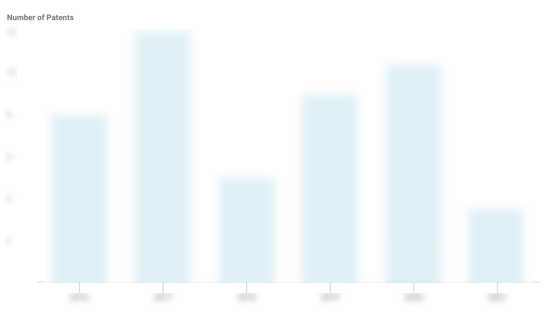
SigFox
Founded Year
2010Stage
Asset Sale | AssetsPurchasedTotal Raised
$311.04MAbout SigFox
SigFox provides communication services at low power wide area network (LPWAN) connectivity for the Internet of Things (IoT) and machine-to-machine (M2M) communications. The company provides its services to a wide range of industries such as supply chain and logistics, manufacturing, retail, financial service, and agriculture. The company was founded in 2010 and is based in Labege, France. In January 2023, SigFox filed for bankruptcy.
Loading...
Loading...
Research containing SigFox
Get data-driven expert analysis from the CB Insights Intelligence Unit.
CB Insights Intelligence Analysts have mentioned SigFox in 1 CB Insights research brief, most recently on Dec 19, 2022.
Expert Collections containing SigFox
Expert Collections are analyst-curated lists that highlight the companies you need to know in the most important technology spaces.
SigFox is included in 5 Expert Collections, including Supply Chain & Logistics Tech.
Supply Chain & Logistics Tech
4,664 items
Companies offering technology-driven solutions that serve the supply chain & logistics space (e.g. shipping, inventory mgmt, last mile, trucking).
Smart Cities
4,679 items
Conference Exhibitors
6,062 items
Companies that will be exhibiting at CES 2018
Grid and Utility
2,383 items
Companies that are developing and implementing new technologies to optimize the grid and utility sector. This includes, but is not limited to, distributed energy resources, infrastructure security, utility asset management, grid inspection, energy efficiency, grid storage, etc.
Advanced Manufacturing
7,017 items
Companies in the advanced manufacturing tech space, including companies focusing on technologies across R&D, mass production, or sustainability
SigFox Patents
SigFox has filed 51 patents.
The 3 most popular patent topics include:
- wireless networking
- radio resource management
- network protocols

Application Date | Grant Date | Title | Related Topics | Status |
|---|---|---|---|---|
11/30/2018 | 10/1/2024 | Global Positioning System, Geolocation, Wireless locating, Navigation, Wireless networking | Grant |
Application Date | 11/30/2018 |
|---|---|
Grant Date | 10/1/2024 |
Title | |
Related Topics | Global Positioning System, Geolocation, Wireless locating, Navigation, Wireless networking |
Status | Grant |
Latest SigFox News
Oct 16, 2025
Promoted | Low-power internet-of-things networks such as Sigfox promise to transform South Africa’s economy. South Africa’s digital future hinges on how effectively its industries embrace the internet of things (IoT). From agriculture and mining to healthcare and logistics, connected devices are driving smarter decisions, greater efficiency and sustainable growth. Yet many sectors still rely on global system for mobile communications-based connectivity (2G/3G/4G) to power their IoT deployments – a choice that increasingly exposes them to operational, financial and strategic risks. With the planned sunset of legacy GSM networks by 2027 and the rise of low-power, scalable alternatives like Sigfox, the time to pivot is now. Sector-by-sector analysis Sigfox offers deep rural coverage and long range connectivity High power consumption shortens battery life of in the field sensors Sigfox devices transmit small packets efficiently, which tranlastes to long battery life, ideal for in the field sensors, where electricity is not available GSM sunset by 2027 threatens long-term viability of deployed devices Future-proof connectivity ensures continuity beyond GSM phase-out Potential outcomes and benefits: (based on qualitative impact and quantitative benchmarks from industry reports) Up to 30% increase in crop yields through precision farming 20-40% reduction in water usage, supporting climate resilience Empowerment of smallholder farmers with affordable, low-maintenance tools Mining and industrial automation IoT networks support massive device deployments in bespoke scenarios High device density causes network congestion and latency. Sigfox allows for multiple devices to communicate simultaneously Frequent maintenance due to power-hungry GSM modules Low power sensors operate autonomously for years Potential outcomes and benefits: (based on international benchmarks applied to local contexts) 50% reduction in unplanned downtime, boosting productivity. Improved worker safety and compliance with environmental standards. Real-time visibility into remote operations and asset health. Smart cities Sigfox supports tens of thousands of devices per base station with low data throughput High data costs and power usage limit scalability Smart lighting, waste bins, and parking sensors run are designed for extremely long battery life using a low power wide area network Legacy GSM modules may become obsolete post-2027 LPWAN is a mature technology but still in its infancy in terms of device compatibility and longevity Potential outcomes and benefits: (based on qualitative impact and quantitative benchmarks from industry reports) 25-40% savings in energy costs through smart infrastructure Faster emergency response and improved public safety Data-driven urban planning and enhanced citizen experience Healthcare and telemedicine Sigfox enable secure, low-power patient monitoring Coverage gaps in rural clinics affect data continuity Reliable connectivity in underserved areas supports chronic care Security vulnerabilities expose patient data End-to-end encryption ensures compliance with Protection of Personal Information Act and global standards Potential outcomes and benefits: (based on qualitative impact and quantitative benchmarks from industry reports) 30% improvement in chronic disease management via remote monitoring Reduced hospital readmissions through early alerts Expanded access to care in rural and underserved communities Energy and utilities Smart meters using Sigfox operate independently of grid power Data loss during outages affects billing and fault detection Real-time fault alerts and consumption tracking improve service delivery GSM sunset risks stranded infrastructure Long battery life and low data needs reduce operational costs Potential outcomes and benefits: (based on qualitative impact and quantitative benchmarks from industry reports) 15-25% reduction in energy theft and loss via smart metering Faster outage resolution and predictive fault detection Support for renewable energy integration and demand forecasting Logistics and asset tracking Sigfox devices can be disposable and have very long battery life. Coverage gaps affect cross-border and rural asset visibility Ideal for pallets, containers and non-powered assets GSM congestion impacts real-time tracking accuracy Scalable, cost-effective tracking across supply chains Potential outcomes and benefits: (based on qualitative impact and quantitative benchmarks from industry reports) Up to 90% reduction in cargo loss or theft with real-time tracking Optimised routing and fuel savings through connected fleet management Enhanced supply chain transparency and customer satisfaction Final takeaway GSM-based IoT connectivity is increasingly risky in South Africa’s evolving infrastructure landscape. From coverage and cost to scalability and security, GSM falls short of the demands of modern, data-driven industries. Purpose-built IoT networks offer a resilient, future-proof alternative – designed to thrive in South Africa’s rural, industrial and urban environments.
SigFox Frequently Asked Questions (FAQ)
When was SigFox founded?
SigFox was founded in 2010.
Where is SigFox's headquarters?
SigFox's headquarters is located at 425 rue Jean Rostand, Labege.
What is SigFox's latest funding round?
SigFox's latest funding round is Asset Sale.
How much did SigFox raise?
SigFox raised a total of $311.04M.
Who are the investors of SigFox?
Investors of SigFox include UnaBiz, Impact China, Khazanah Nasional, iXO Private Equity, Intel Capital and 21 more.
Who are SigFox's competitors?
Competitors of SigFox include 1NCE, Everynet, Link Labs, Telensa, QMC and 7 more.
Loading...
Compare SigFox to Competitors
Convergent Networks is a Mobile & Telecommunications/Telecom Devices & Equipment company based in Billerica, Massachusetts. Convergent Networks' investors include North Bridge Venture Partners, Worldview Technology Partners, Battery Ventures, Matrix Partners and VantagePoint Venture Partners.

QMC focuses on connectivity infrastructure within the telecommunications sector. It provides solutions such as distributed antenna systems (DAS), small cells, and telecom towers to facilitate indoor and outdoor wireless communication. The company primarily caters to the needs of telecom operators, businesses requiring indoor network quality, and municipalities for outdoor connectivity projects. It was founded in 2008 and is based in Sao Paulo, Brazil.

PacketFabric is a Network as a Service (NaaS) provider that delivers connectivity solutions. The company offers a platform that enables businesses to establish point-to-point connections, multi-cloud routing, and hybrid cloud solutions through a private optical network, facilitated by automation and an API. PacketFabric serves the IT, network, and DevOps sectors, providing them with the means to deploy connectivity. It was founded in 2015 and is based in Culver City, California.

Actility specializes in low-power wide-area networks (LPWAN) for the Internet of Things, offering connectivity solutions and a platform for IoT network deployment and management. The company provides the ThingPark platform, which integrates advanced LoRaWAN network servers, low-power cellular connectivity, and satellite radio networks, along with a comprehensive catalog of pre-integrated IoT devices. Actility's solutions cater to various sectors, including smart industries, smart cities, energy, utilities, logistics, building management, and precision agriculture. It was founded in 2010 and is based in Paris, France.

Wireless Logic specializes in cellular IoT connectivity and operates within the telecommunications sector. The company offers IoT connectivity solutions, including global eSIM, local multi-network SIM, low power SIM technology, and managed enterprise connectivity services. These products aim to support various IoT applications across multiple sectors. It was founded in 2000 and is based in Berkshire, United Kingdom.

Aeris focuses on providing intelligent IoT network and platform services within the technology sector. The company offers a suite of software solutions designed to enhance connectivity, security, and support for businesses with complex, global cellular IoT deployments. Aeris primarily serves sectors such as fleet and telematics, energy and utilities, healthcare, and automotive OEMs. It was founded in 1996 and is based in San Jose, California.
Loading...

